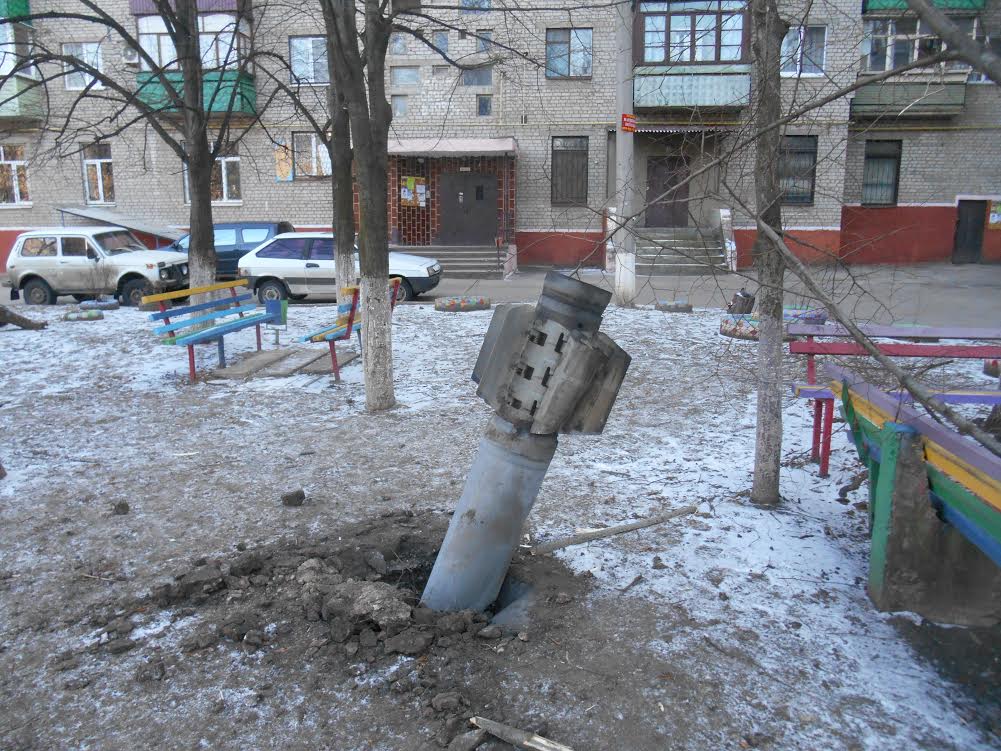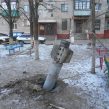
What Is Next for Donbas Separatists After Fall of Debaltseve?
Publication: Eurasia Daily Monitor Volume: 12 Issue: 31
By:

After weeks of intense battles, Russia-supported militants have captured Debaltseve, a strategically located town in eastern Ukraine (Interfax, February 18). In a telephone conversation with the author on February 19, the spokesman for the Ministry of Defense of the self-proclaimed Donetsk People’s Republic (DPR), Eduard Basurin, proclaimed that the militias of the Donetsk and Luhansk “People’s Republics” (DPR and LPR) are now in control of the entire town, including its important railway terminal. “Our military units have long been present in Debaltseve—largely militia from the LPR, most of them Cossacks—but there are also units from the DPR,” the breakaway region’s defense ministry spokesman said. According to Basurin, as of February 19, armed separatists surround the 3,000-strong group of the Ukrainian army (Author’s interview, February 19).
“It is true that terrorists control Debaltseve now, but it is foolish [to say] that they surrounded the 3,000-strong group of the Ukrainian army. Almost all Ukrainian armed forces left Debaltseve with tanks and other military equipment,” the head of Ukraine’s Anti-Terrorist Operation (ATO) Press Center Staff, Alexander Motuzyanik, contended (Author’s interview, February 19).
“Now Cossacks are checking the documents of people in Debaltseve. There are some Ukrainian soldiers in town, but they are undercover, dressed in civilian clothes,” Evgeny Kaplin told Jamestown on February 19 after returning to Debaltseve that same day. Kaplin, the leader of the humanitarian mission Proliska, continued, “The city has practically ceased to exist. About 50 percent of the buildings have been destroyed. There is no electricity and water.”
Debaltseve is a small town, 74 kilometers to the northeast of Donetsk by road. Prior to the conflict in Donbas (eastern Ukrainian region encompassing Donetsk and Luhansk provinces), the population of Debaltseve was only around 25,000 people. Nevertheless, this town has one of the largest railway hubs in Ukraine and is strategically located between the cities of Donetsk and Luhansk, along the main transit corridor directly linking the two separatist metropolitan centers. Especially in recent weeks, Debaltseve became the primary contentious point in the fighting between the Russia-backed separatist groups and the Ukrainian army. The reason for such heavy fighting was that the Ukrainian army managed to advance deep into territory under the control of the self-proclaimed DPR in the area around Debaltseve. Armed separatists, in turn, attempted to surround the 8,000-strong group of the Ukrainian army operating there. Notably, in a telephone conversation with the author on January 25, DPR defense ministry spokesman Eduard Basurin openly stated that capturing Debaltseve was the strategic goal of the “DPR’s army.”
The continuing assault on Debaltseve had cast doubt on the viability of the current truce, agreed upon in Minsk on February 12 (see EDM, February 12). Judging by the Ukrainian mainstream and social media, few Ukrainian analysts and journalists believe that the recent peace talks in Minsk were successful. An article by the influential Kyiv-based analyst Vitaly Portnikov summarizes these views well: “Can peace be reached with the DPR and—more broadly—with Putin? Of course, not. Peace for Putin would actually mean his defeat,” he writes. “Putin is losing even the economic levers that were so strong before [former Ukrainian president] Viktor Yanukovych fled the country. So, he [Putin] is not interested in peace, since peace for him equals the final loss of Ukraine. It is not incidental that in the run up to the talks in Minsk, one of the Russian propagandists said that if Donbas ‘gains independence,’ Putin will have no more levers to influence the ‘anti-Russian drift’ of Ukraine,” Portnikov argues (Liga.net, February 12).
After the capture of Debaltseve, there are serious risk that the DPR-LPR separatists will next try to advance on the frontline cities of Slavyansk and Kramatorsk—located just 94 and 70 kilometers north of Donetsk, respectively. The situation is further amplified by the fact that Kramatorsk and Slavyansk were the first cities in eastern Ukraine that saw the rise of armed separatist units under the command of Igor Strelkov (a. k. a. Girkin) who was dispatched to Donbas by Russia. The separatists have publicly declared on multiple occasions that the “liberation of Kramatorsk and Slavyansk is a question of honor” for them (Rosbalt.ru, February 11).
On February 10, on the eve of the Minsk ceasefire talks, the separatists shelled Kramatorsk with Grad missiles. According to the latest information, 16 people were killed in the city and 64 sustained injuries. These numbers included both the military and civilians. This author visited Kramatorsk one day after the shelling and can testify that the destruction in the city was not significant. In one place, a shell broke through the roof of a house and a few balconies were destroyed, but no building was demolished in its entirety. Kramatorsk authorities estimated the damage at around $190,000 (Rosbalt.ru, February 11).
Nonetheless, the shelling of Kramatorsk caused panic to spread throughout the area. According to locals who spoke to Jamestown, many people who owned homes in other Ukrainian regions have already left this frontline city. Now, rumors persist in Kramatorsk and Slavyansk that the separatists intend to take over these towns again. The situation is further aggravated by the fact that about 40,000 refugees from the Donbas war zone currently reside in Kramatorsk and Slavyansk. For the two cities with populations of only about 100,000 each, this is quite a large burden (Rosbalt.ru, February 9).
“The separatists have stated multiple times that they will ‘liberate’ Kramatorsk and Slavyansk and a relatively high percent of refugees sympathize with the terrorists,” warned Denis Begunov, an official from the Political Department of the Slavyansk city government. “After the separatists’ assault on Debaltseve, rumors about a possible revanche [of Kramatorsk and Slavyansk] by the separatists have strengthened further. In reality, however, I am sure that we will be able to keep the situation under control,” Begunov assured Jamestown in early February (Author’s interview, February 8).
While the so-called Normandy group of leaders of Germany, France, Ukraine and Russia continue to try to push for the implementation of the February 12 Minsk ceasefire agreement (Kyiv Post, February 19), the military situation on the ground in Donbas remains fluid and dangerous. Certainly, hostilities in eastern Ukraine are far from over.




